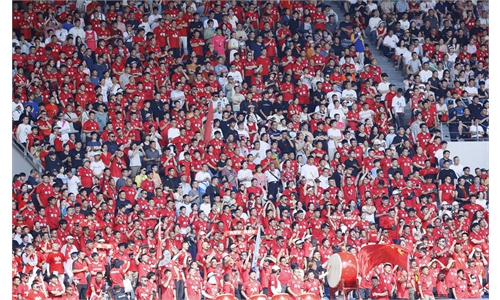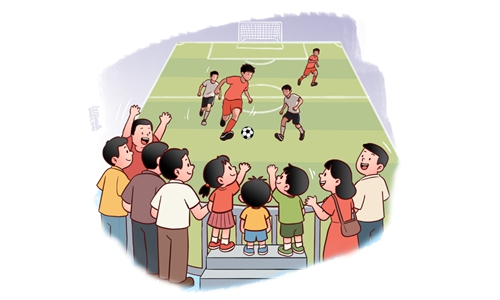SPORT / SOCCER
China’s first fully autonomous 3v3 AI robot football match completes, validating world humanoid sports games technology

The final of the ROBO League robot football tournament concluded on Saturday in Beijing, the THU Robotics from Tsinghua University defeated the Mountain Sea from China Agricultural University team 5:3 to win the championship. This event served as the first test match for the upcoming 2025 World Humanoid Sports Games and marked China's first-ever fully autonomous 3v3 AI robot football competition.
The final of the ROBO League robot football tournament concluded on Saturday in Beijing, the THU Robotics from Tsinghua University defeated the Mountain Sea from China Agricultural University team 5:3 to win the championship.
This event served as the first test match for the upcoming 2025 World Humanoid Robot Sports Games and marked China's first-ever fully autonomous 3v3 AI robot football competition, according to CCTV News.
"This is the first fully autonomous AI robot football match in China. It represents a combination of technological innovation and industrial application, as well as an important window for bringing robots into public life and real-world scenarios," Dou Jing, executive director of the tournament organizing committee and deputy general manager of Shangyicheng (Beijing) Technology and Culture Group, told the Global Times on Saturday.
According to the tournament's organizing committee, robots still face limitations in dynamic obstacle avoidance, leading to frequent collisions during matches. To address this, organizers adopted a more lenient rule system, allowing certain non-malicious collisions to go unpunished. This differentiated approach has become a defining feature of robot football, balancing competitiveness, spectator appeal, and engineering feasibility under current technological conditions, while also providing valuable insights for future rule iterations and technical improvements.
Cheng Hao, founder of Booster Robotics, the official robot supplier for the event, told the Global Times on Saturday that this year's competition achieved two major technical breakthroughs: first, all participating robots operated entirely based on AI-driven strategies, requiring no human intervention, including autonomous fall recovery; second, the tournament introduced an optimized penalty and referee system, significantly reducing game interruptions and enhancing the flow and intensity of matches.
"We chose the football scenario for robot competition primarily for two reasons: first, to encourage students to apply their algorithmic skills to real-world robotics; second, to showcase the robots' ability to walk autonomously and stably, withstand collisions, and demonstrate higher levels of intelligence and safety," Cheng said. "Football, as a typical scenario of both confrontation and collaboration, provides the public with an intuitive understanding of the real-world application potential of humanoid robotics."
"In the future, we plan to develop a series of robotics competition IPs, including the humanoid robot half-marathon and 'Mech League,' to accelerate the real-world application and large-scale adoption of humanoid robot technologies," said Bian Yuansong, from the event co-organizer Shangyicheng (Beijing) Science and Technology Culture Group.
According to Cheng, current robot football performance is roughly equivalent to that of five- to six-year-old children, scoring around one to two points per match. But progress has been remarkably rapid.
From the world's first humanoid robot half-marathon to China's first fully autonomous humanoid robot football match, robotics competitions are becoming key platforms for technology validation and industry catalysis. They promote collaborative development across the entire robotics industry chain, from research and development to manufacturing and application, updating public perception about robots and boosting market confidence in robotic products and technologies, according to CCTV News.
"Just a year ago, robot matches were slow-paced, required human safety assistants, and robots were easily damaged by falls," Cheng said. "Now, they can engage in autonomous confrontations, reach speeds of 1 meter per second, and sometimes they can stand up independently after falling."
"We expect exponential growth in the coming years, with robots surpassing youth-level teams and eventually challenging adult teams," Cheng said.



